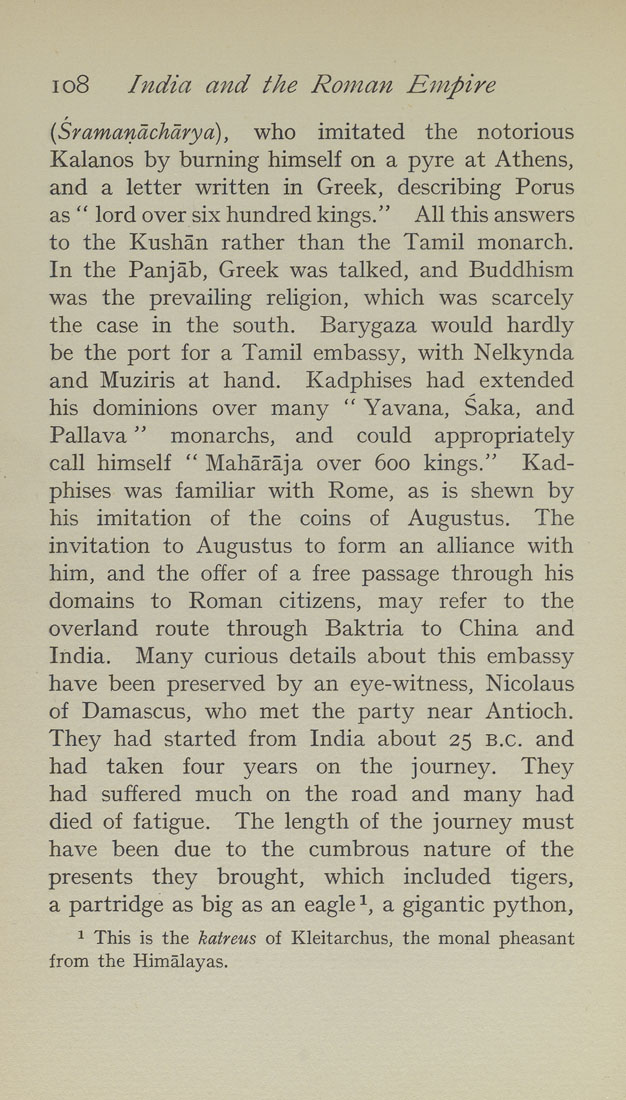io8 India and the Roman E^npire
(Sramandchdrya), who imitated the notorious
Kalanos by burning himself on a pyre at Athens,
and a letter written in Greek, describing Porus
as " lord over six hundred kings." All this answers
to the Kushan rather than the Tamil monarch.
In the Panjab, Greek was talked, and Buddhism
was the prevailing religion, which was scarcely
the case in the south. Barygaza would hardly
be the port for a Tamil embassy, with Nelkynda
and Muziris at hand. Kadphises had extended
his dominions over many " Yavana, Saka, and
Pallava" monarchs, and could appropriately
call himself " Maharaja over 600 kings." Kad¬
phises was familiar with Rome, as is shewn by
his imitation of the coins of Augustus. The
invitation to Augustus to form an alliance with
him, and the offer of a free passage through his
domains to Roman citizens, may refer to the
overland route through Baktria to China and
India. Many curious details about this embassy
have been preserved by an eye-witness, Nicolaus
of Damascus, who met the party near Antioch.
They had started from India about 25 B.C. and
had taken four years on the journey. They
had suffered much on the road and many had
died of fatigue. The length of the journey must
have been due to the cumbrous nature of the
presents they brought, which included tigers,
a partridge as big as an eagle 1, a gigantic python,
^ This is the katreus of Kleitarchus, the monal pheasant
from the Himalayas.
|








